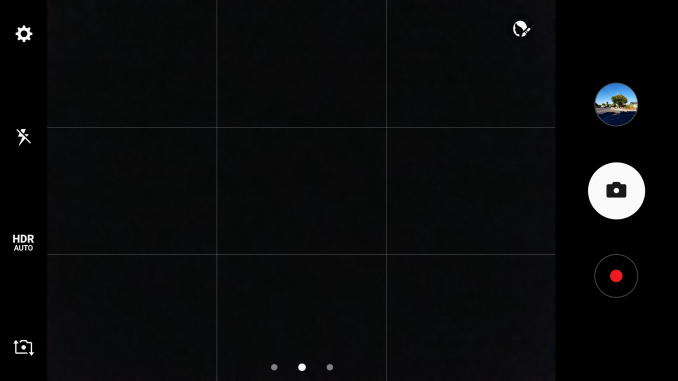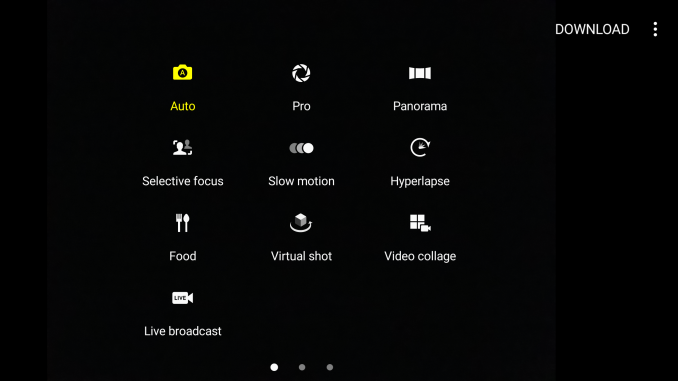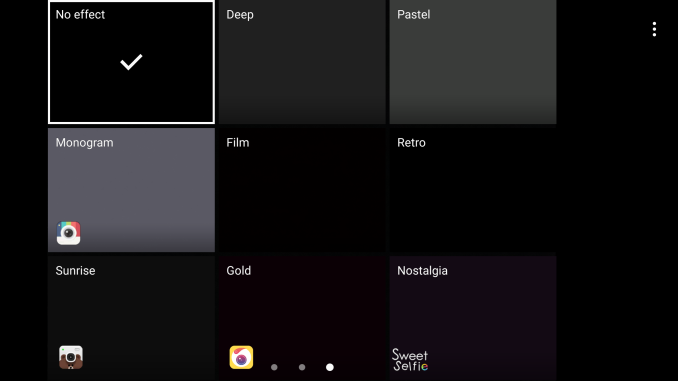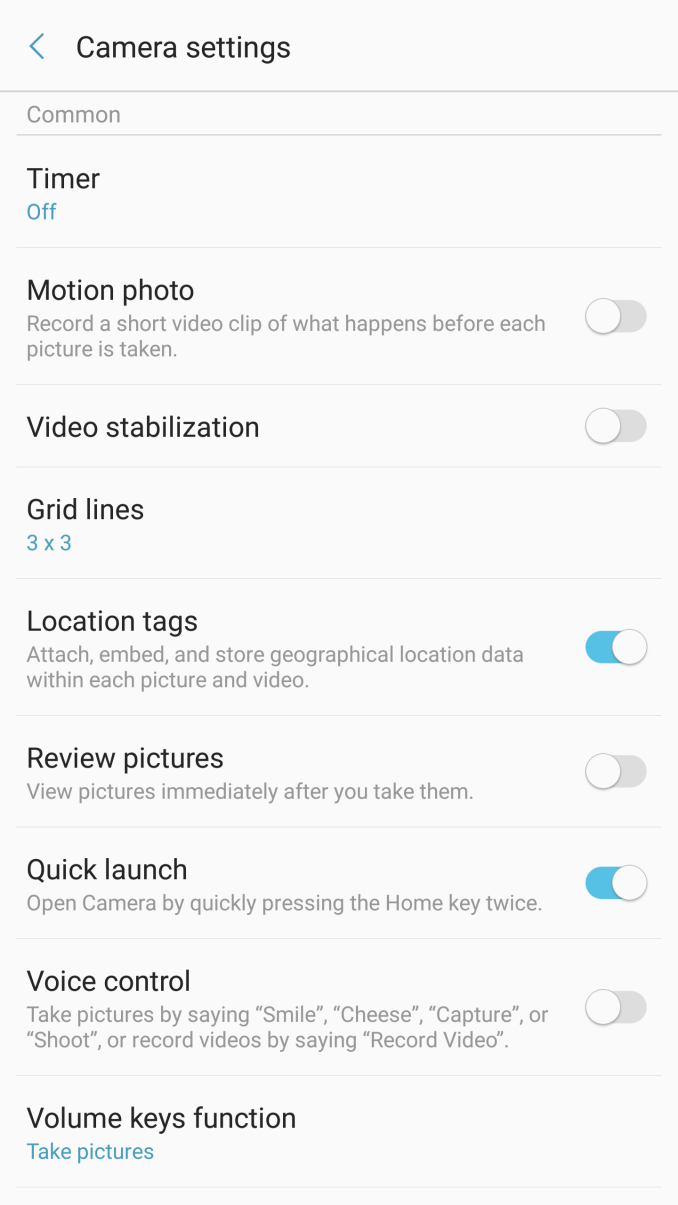The Samsung Galaxy Note7 (S820) Review
by Joshua Ho on August 16, 2016 9:00 AM ESTCamera Architecture
In general, camera has become probably the single biggest point of differentiation between smartphones at this point. As smartphones are often the only camera that most people carry on a day to day basis, the rear camera on a smartphone really cannot be a disappointment relative to the competition. While we can talk about how much a front-facing camera matters in terms of quality, it’s pretty safe to say that for photos and videos that are worth saving will be taken with the rear-facing camera.
While post-processing and a number of other factors are going to have a huge impact on the overall camera experience, the foundation that makes it possible to deliver a great camera is always going to start at the hardware.
| Samsung Galaxy Note Cameras | ||||
| Galaxy S6 Galaxy Note5 |
Galaxy S7 Galaxy Note7 |
|||
| Front Camera | 5.0MP | 5.0MP | ||
| Front Camera - Sensor | Samsung S5K4E6 (1.34 µm, 1/4") |
Samsung S5K4E6 (1.34 µm, 1/4") |
||
| Front Camera - Focal Length | 2.2mm (22mm eff) | 2.1mm (21mm eff) | ||
| Front Camera - Max Aperture | F/1.9 | F/1.7 | ||
| Rear Camera | 16MP | 12MP | ||
| Rear Camera - Sensor | Sony IMX240 Samsung S5K2P2 (1.12 µm, 1/2.6") |
Sony IMX260 Samsung S5K2L1 (1.4 µm, 1/2.6") |
||
| Rear Camera - Focal Length | 4.3mm (28mm eff) | 4.2mm (26mm eff) | ||
| Rear Camera - Max Aperture | F/1.9 | F/1.7 | ||
It’s probably not any surprise that the Galaxy Note7 has the same exact camera setup as the Galaxy S7, but in case it was ever in doubt it shouldn’t be now. Given the similar camera setup I don’t think that there’s a ton of difference to be expected between the two phones but things like software algorithms can and do change with time so it’s important to not just immediately write off the Galaxy Note7 or assume it’s immediately going to be award-winning. It’s worth reiterating here that the dual pixel system likely incurs a sensitivity penalty as in order to implement the dual pixel system each pixel must have a physical light barrier as you need a microlens and a barrier to make light from the same object converge on two separate photodiodes so the amount of light collected is inherently going to be less than no barrier and a single photodiode per pixel. I’m also curious to know whether any quantum effects appreciably change sensitivity here as if a single pixel is a 1.4 micron square then each photodiode has area similar to a 1-micron pixel. With that said we can move on to the one major change highlighted by Samsung, namely the user experience.
Camera UX
One of the major points highlighted in the launch event was that the camera application was completely redesigned. In addition to a fairly subdued icon that better fits the color palette for Android in general, the UI itself is a bit cleaner out of the box.
Right away when you open the camera app the most apparent thing is that the number of icons has been reduced. Instead of a dedicated mode button it’s now a swipe, and the same is true of the effects button. There’s also no more timer or resolution button on the screen by default, and the button to hide the various settings buttons has been eliminated entirely. It’s also worth mentioning that the button to change between cameras has been moved and a gesture to do the same thing has been added so you can simply swipe up or down to switch between cameras. Samsung also continues to shut off the camera after a few minutes automatically which is good if you’re a normal user but annoying if you’re trying to set up a shot of an ISO chart with a tripod.
Other than these changes almost nothing else really changes. There are some extra toggles like shape correction in the settings overflow and RAW output is now hidden under Picture Size for the rear camera but nothing else is really notable. I don’t really have anything else to say here that’s new, and I would refer to the Galaxy S7 Part 2 review if you are otherwise unfamiliar with Samsung’s camera application. As both perform identically as far as focus and capture speed goes subjectively we’ll temporarily forgo these results in favor of timeliness for this review.















202 Comments
View All Comments
theduckofdeath - Tuesday, August 16, 2016 - link
The typical half glass full, negative approach when reviewing Samsung devices at Anandtech... I guess more of you guys wants a job at Apple like the one Anand managed to get?theduckofdeath - Tuesday, August 16, 2016 - link
Half glass empty, that is...See, I'm simply not capable of being as negative as an Anandtech writer. :)
jiffylube1024 - Tuesday, August 16, 2016 - link
I hate to hear the "Anandtech is posting biased reviews" argument because they do such a good job of being in-depth, and I appreciate their reviews tremendously. However, I agree that there is a bias in the wording, intentional or not, against Samsung's recent Galaxy phones, which have been spectacular options in the Galaxy S6/S7 era, even in spite of Touchwiz's shittiness.Is Samsung's aluminum and glass industrial design and unique bezel-free design really so bad? Anandtech thinks it's tired and needs a refresh. In The Verge's review, they come up with a completely different conclusion - they say the Note 7 the best big phone ever, and praise how Samsung has out-designed the competition. Such a huge discrepancy down to essentially a matter of taste. Can we not reach a middle ground - every review of a Galaxy review on AT needs to mention how they need to spice up the "rectangle with rounded corners". It's fine for what it is!
----
To take just one example to hone my point, The iPhone 6S's camera in the AT review was rightly praised for its improved video - 4K recording and 1080p 120 fps. However very little was made of how it was essentially the same damn sensor as the last gen with shrunken pixels giving it a nominal bump from 8MP to 12MP, with basically zero quality difference in stills.
In the Samsung Galaxy S7 review, the super fast laser Autofocus was mentioned, but the overall image quality was described thusly "However, with that said the output of the Galaxy S7 and S7 edge’s camera is not that impressive. I would argue that while it’s not worse than the iPhone 6s Plus, it is basically comparable."
It's not that impressive, yet equal to the iPhone 6S Plus. There was nothing in the iPhone 6S review or conclusion that described its camera as mediocre, yet that's how it comes off in the S7 review - Samsung has to be better, or it's unimpressive.
lilmoe - Tuesday, August 16, 2016 - link
Samsung has to be a lot, LOT, better, or it's unimpressive. FTFY.It's a mentality that really kills me.
theduckofdeath - Wednesday, August 17, 2016 - link
Exactly.Just because a person writes a ten page biased review it really doesn't make it less biased. This place just can't learn from old mistakes. Anandtech used to be a place you could go to to read reliable in-depth reviews about technology and gadgets. I don't know exactly when that changed, but I guess it was a long time ago when Anand had received enough gifts and perks from Apple to sway the whole writing culture on Anandtech.
thunderwave_2 - Thursday, August 18, 2016 - link
Here in the UK, though, they're charging £700 for it. You could buy two OnePlus 3's (£329 each) and still have change. Don't get me wrong, this is surely the better phone. But is it really worth twice the price?lilmoe - Saturday, August 20, 2016 - link
Then why isn't the same being said about every other expensive phone???Meteor2 - Saturday, August 20, 2016 - link
It is.theduckofdeath - Saturday, August 20, 2016 - link
Read the first page of the iPhone 5 SE review and you'll get some perspective. An over-priced cynical release that Apple released thinking consumers were all stupid. Not a single complaint about Apple reusing the exact same hardware of a phone they had released several years earlier, and still asking for a stupid high price.This Galaxy Note 7 is still using a really unique design language that no other brand has managed to copy. Read the first page of this review again.
This site has gone down the drain as an Apple marketing portal. Which I guess is why the comment sections are really starting to die. Because you know, people are not as stupid as Apple and Anand and his minions seem to think.
Bluetooth - Tuesday, August 16, 2016 - link
How can you say that when they do absolutely the best reviews, which are based on actual and realistic measurements. If you prefer superfluous reviews go to The Verge.